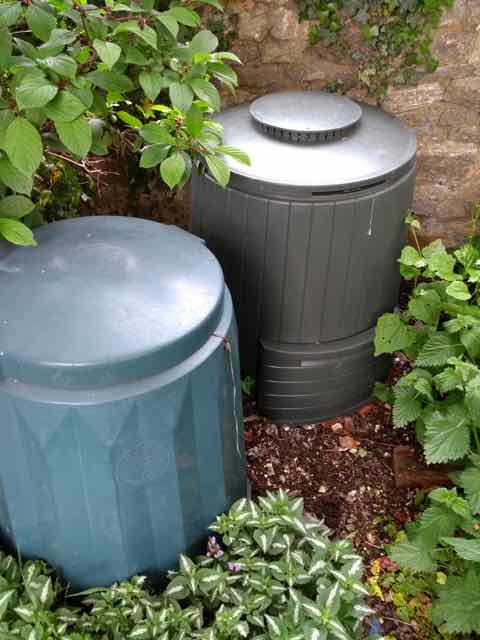Now is the time to weed and tidy up in the garden, before the weeds get too big. Composting is the easy way to get rid of the resulting piles of unwanted greenery. If you haven’t done it before, here is the low-down.
Why compost?
- You get a fabulous soil conditioner to help make your soil more healthy and to feed your plants
- Save watering by using the compost as a mulch round your plants
- Stop council tax increasing by sending less to their recycling
- Reduce global warming by preventing the release of methane. This gas is released when organic matter in landfills reacts with other materials
Not bad for something so easy to do! And it’s very satisfying to see the result – a sweet-smelling earthy crumbly mixture.
How to compost
- Find a container. Four pallets wired together or a roll of chicken wire will suffice. Many councils sell good plastic composters at half price
- Let your bin allow worms in through the base (though even without it you’ll get compost eventually) – plastic ones usually have holes for this
- Add materials in a rough ratio 2:1 or 3:2 ‘Browns’:’Greens’ (though there are many ‘recipes’). ‘Brown’ materials are dry brown things like straw, dry leaves, paper, cardboard, dried weeds and sawdust; they give carbon. ‘Greens’ are wet, fresh things like vegetable peelings, grass cuttings and fresh weeds; they give nitrogen. Soak dry materials and cut up things like cardboard.
- If you have time, put in layers of greens and browns. If not, put in as you go and stir and turn the heap from time to time. It should be damp but not wringing wet.
- Cover (use old quilt or carpet for lidless heaps) and leave 3-6 months or more.
The process
- Aerobic and anaerobic organisms eat the waste. The first need air, the second do not. So a mixture of containment and aeration works – in any case, it’s a natural process that will happen anyway. You can speed it up, however, with the method above
Problems?
- Smell: Add ‘browns’
- Flies: Turn and add ‘greens’
- Damp: Add ‘browns’. Especially important with grass cuttings, and in winter
The result
- Soil-like crumbly brown material which smells nice, made of decomposed plant and animal material
What next
- Leave on top of the soil as a mulch and feed. The worms will do the work of taking it into the soil for you
- For more ideas, ‘Bob’s Basics: Composting’ by Bob Flowerdew, panellist on Radio 4’s Gardener’s Question Time, will give you more details and even a history of composting. I read ‘Backyard Composting’ by John Roulac (£2.49) and ‘Organic Gardening’ (RHS encyclopaedias, Pears and Strickland).


{ 2 comments… read them below or add one }
I didn’t know I wanted or needed compost for my garden, but I am now going to get one going. It might help my garden as it has been hard to get plants grown and producing in our short summers here (but lots of light). Thanks for the info.
Thanks for the comment Cynthia – yes, composting is a useful source of nourishment for the soil. I have a compost bucket with lid in the kitchen to put peelings etc into (not meat as that attracts rats). That and garden cuttings will give you a good heap. Good luck! Jane